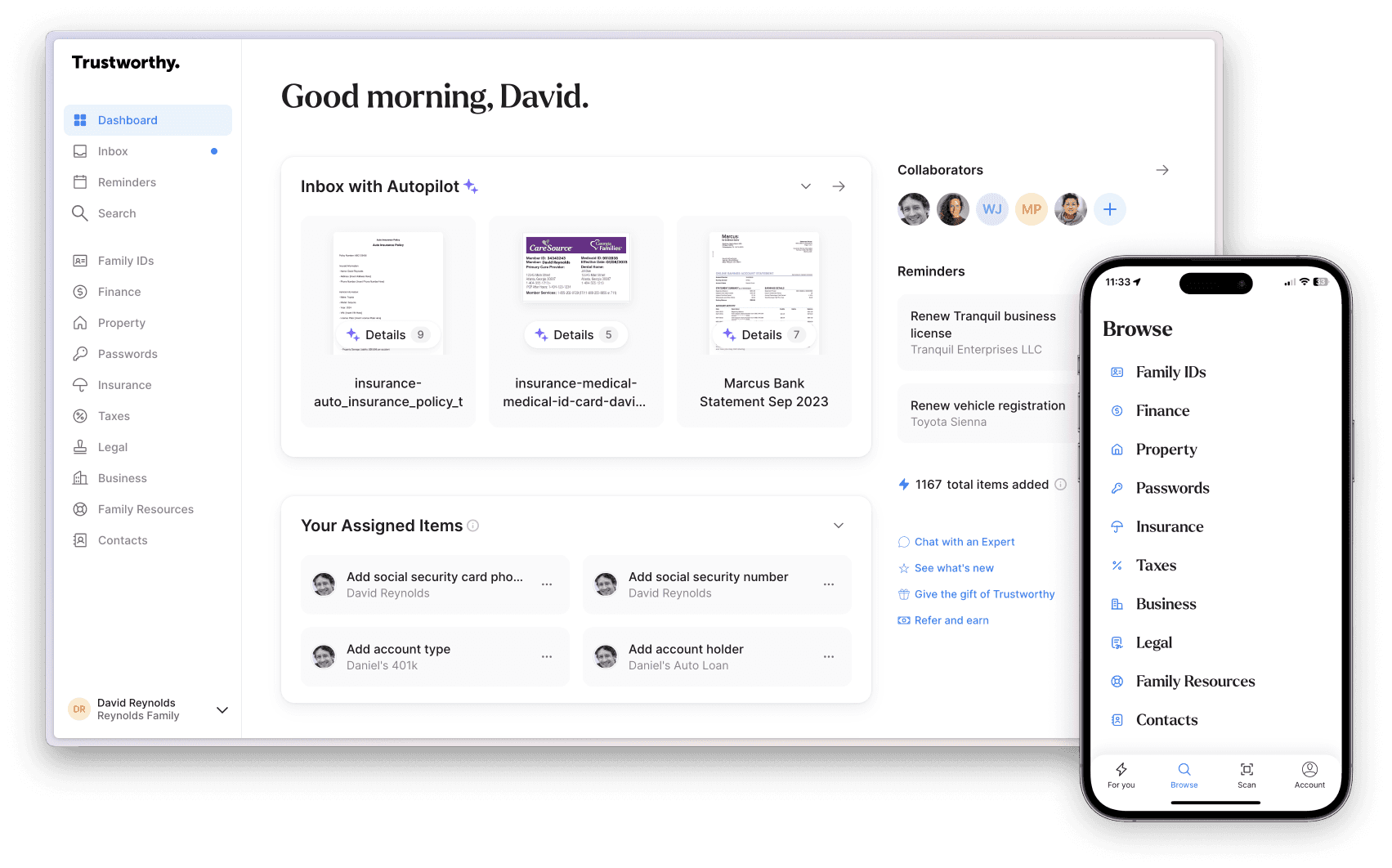In cryptography, the Data Encryption Standard (DES) is one of the most widely used encryption algorithms in history. Developed in the 1970s by IBM and adopted by the U.S. government, DES played a crucial role in securing sensitive information for decades. But what exactly is the DES, and how does it work? Is it still relevant today?
We’ll explain DES's inner workings, its strengths and weaknesses, and the role it has played in shaping modern encryption standards.
Key Takeaways:
DES is a symmetric-key algorithm that uses a 56-bit key to encrypt and decrypt data in 64-bit blocks.
DES's relatively short key size made it vulnerable to brute-force attacks as computing power increased over time.
Today, more advanced encryption standards like AES have largely replaced DES for securing sensitive data.
Understanding the Basics of DES

DES is a symmetric-key algorithm, which means that the same key is used for both encrypting and decrypting data. The algorithm operates on 64-bit blocks of data, applying a series of permutations, substitutions, and XOR operations to transform the plaintext into ciphertext.
At the heart of DES is a 56-bit key, which is derived from a 64-bit input key by removing every 8th bit (these bits served as parity bits for error detection). The 56-bit key is then used to generate 16 48-bit subkeys, one for each round of the DES algorithm.
As Cryptographer, Gideon Samid explains:
"DES -- Data Encryption Standard -- has been the workhorse of modern cryptography for many decades. It has never been compromised mathematically (not in the open literature, at least), yet, its design notes were never made public either. Many who use it are unaware of how it works.
Here, we open the DES box and find inside a repetition of sub-boxes in which very simple primitives are at work: substitution, transposition, split, concatenation, and bit-wise operation. DES inside teaches us that complexity is comprised of a lot of simplicity."
The DES encryption process consists of 16 rounds of transformation, each using a different subkey. The plaintext block is divided into two 32-bit halves, which undergo a series of permutations and substitutions based on the subkey for that round. The output of each round serves as the input for the next round, creating a complex web of dependencies that obscures the relationship between the plaintext and ciphertext.
After the 16 rounds are complete, the final permutation is applied to the block, and the ciphertext is produced. Decryption follows the same process in reverse, using the same 56-bit key and subkeys but applying the rounds in the opposite order.
A team at IBM led by cryptographer Horst Feistel developed and adopted DES in the early 1970s. The algorithm was based on Feistel's earlier work on the Lucifer cipher, which IBM had developed for commercial use.
In 1973, the U.S. National Bureau of Standards (NBS), now known as the National Institute of Standards and Technology (NIST), put out a call for proposals for a national encryption standard. IBM submitted a modified version of the Lucifer cipher, which was eventually accepted and renamed the Data Encryption Standard (DES).
Before its official adoption, DES underwent intense scrutiny and public debate. The NBS published the algorithm's full specifications and invited cryptographers and researchers to analyze and attempt to break it. This process helped identify and address potential weaknesses, ultimately strengthening the algorithm.
In 1977, DES was officially adopted as a Federal Information Processing Standard (FIPS), making it the go-to encryption method for securing sensitive but unclassified government data. Its use quickly spread to the private sector, where it became a standard for securing financial transactions, confidential business data, and more.
Controversies and the Rise of Triple DES

Despite its widespread adoption, DES was not without controversy. From the outset, some cryptographers raised concerns about the relatively short 56-bit key size, arguing that it made the algorithm vulnerable to brute-force attacks (i.e., systematically trying every possible key until the correct one is found).
In the late 1990s, these concerns proved to be well-founded. With the rapid increase in computing power, it became feasible to crack DES through brute force in a matter of days or even hours. In 1997, a group of researchers using a specially designed computer called the DES Cracker managed to break a DES key in just 56 hours.
To address this vulnerability, the cryptographic community developed an enhancement to DES called Triple DES (3DES). As the name suggests, 3DES applies the DES algorithm three times, using either two or three different keys. This effectively increases the key size to 112 or 168 bits, making it significantly harder to break through brute force.
While 3DES temporarily solved the key size issue, it also had drawbacks. The increased number of encryption rounds made 3DES significantly slower than the original DES algorithm, which was already considered slow by modern standards. Additionally, the algorithm's design was still rooted in the limitations of 1970s computing, making it less efficient than newer encryption methods.
The Advent of Advanced Encryption Standard (AES)

As DES's weaknesses became more apparent, the cryptographic community recognized the need for a new, more secure encryption standard. In 1997, NIST initiated a public competition to develop a successor to DES, which came to be known as the Advanced Encryption Standard (AES).
The AES competition attracted submissions from cryptographers and researchers around the world. After a thorough evaluation process, the Rijndael cipher, developed by Belgian cryptographers Joan Daemen and Vincent Rijmen, was selected as the winner in 2000.
AES addressed many of the shortcomings of DES, offering key sizes of 128, 192, and 256 bits, and a more efficient design that was better suited to modern computing architectures. AES quickly became the new standard for symmetric encryption, being adopted by governments, businesses, and individuals worldwide.
Despite the rise of AES, DES and 3DES remained in use for some time due to their widespread implementation in legacy systems. However, as the security landscape evolved and computing power continued to increase, the use of DES and 3DES gradually declined.
Lessons Learned from DES

While DES may no longer be considered secure for most applications, its history and design offer valuable lessons for the cryptographic community:
The importance of public scrutiny: The open and transparent process of evaluating DES before its adoption helped identify and address potential weaknesses, setting a precedent for the development of future encryption standards.
The need for adaptability: The rise of 3DES as a response to DES's increasing vulnerability demonstrated the importance of being able to adapt and evolve encryption methods as technology progresses.
The value of competition: The AES competition showcased the benefits of fostering a global, collaborative effort to develop new encryption standards, leveraging the expertise and innovation of the cryptographic community.
The balance between security and efficiency: DES's relatively short key size and slower performance compared to newer algorithms highlighted the ongoing challenge of balancing security with practical implementation considerations.
By understanding DES's strengths and weaknesses and the lessons learned from its lifecycle, we can better appreciate the evolution of encryption methods and the ongoing efforts to keep sensitive data secure in an ever-changing digital landscape.
Enhancing Security with Trustworthy

While DES may no longer be the go-to encryption standard, the need for robust data security remains as critical as ever. That's where Trustworthy comes in, offering a secure digital vault designed to safeguard your most sensitive information.
With Trustworthy, you can add an extra layer of protection to your confidential data, ensuring that only authorized individuals have access. The platform uses advanced encryption techniques, such as AES, and provides granular access controls, secure file sharing, and detailed audit trails to help you maintain the highest levels of security and compliance.
By using Trustworthy in conjunction with modern encryption standards, you can create a comprehensive, multi-layered security strategy that keeps your sensitive data safe from prying eyes. Whether you're dealing with financial records, legal documents, or intellectual property, Trustworthy provides the tools and features you need to protect your most valuable assets.
Frequently Asked Questions
Can DES be used for hashing or generating digital signatures?
While DES is primarily used for encryption, it can be adapted for other cryptographic purposes like hashing and digital signatures. For example, the Data Authentication Algorithm (DAA) is a DES-based hashing algorithm used for generating message authentication codes (MACs).
However, dedicated hashing algorithms like SHA-256 and digital signature algorithms like RSA or ECDSA are more commonly used for these purposes due to their specific design and security properties.
Is it possible to recover the original DES key if it is lost or forgotten?
Recovering a lost DES key is extremely difficult, if not impossible, without resorting to brute-force attacks. This is because the security of DES relies on the secrecy of the key. If the key is lost and there are no backups, the only way to recover the encrypted data would be to systematically try every possible key until the correct one is found.
Are there any modern applications where DES is still considered secure and appropriate to use?
Given DES's known weaknesses and the availability of more secure alternatives like AES, it is generally not recommended to use DES for new applications. However, some legacy systems or devices with limited computational resources may still consider DES acceptable, especially if the data being protected is not highly sensitive or if the encryption is only needed for a short period.
We’d love to hear from you! Feel free to email us with any questions, comments, or suggestions for future article topics.
Trustworthy is an online service providing legal forms and information. We are not a law firm and do not provide legal advice.













